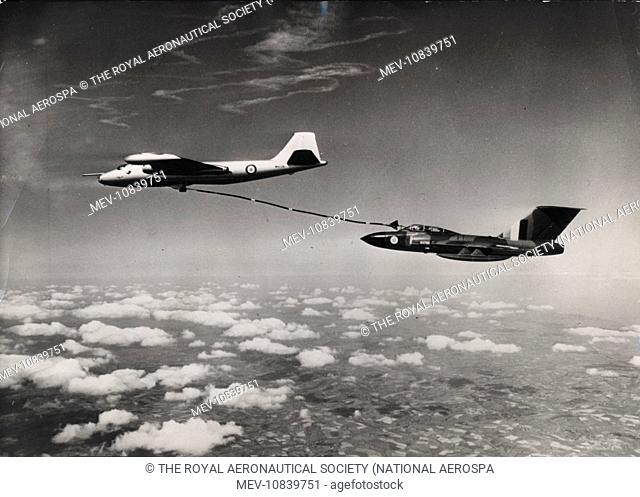- Joined
- 21 May 2006
- Messages
- 2,833
- Reaction score
- 1,912
G'day all
Just a question if I may; did English Electric ever seriously study a flight refuelling receptor arrangement for its Canberra design?
I'm just reading about the Australian / RAAF Operations Requirement to replace it's English Electric Canberra's, but as then PM Menzies was careful to note 'that the Canberra was by no means obsolete'. Considering the then principly perceived threat being Indonesia, I tend to agree with his analogy about the Canberra not being totally obsolete. I'm wondering if the Canberra was able to be retrofitted with an in-flight refuelling receptor, it's principle short falling - range could have been compensated for, hence prolonging the usefulness of the Canberra as a light bomber for the RAAF, some what negate the headlong rush into finding and committing blindly to a State-of-the-art design like either the TSR.2 or TFX, when for all intended purposes, they were all but risky drawing board designs, which would escalate substantially in both money and delayed operational service entry!
Regards
Pioneer
Just a question if I may; did English Electric ever seriously study a flight refuelling receptor arrangement for its Canberra design?
I'm just reading about the Australian / RAAF Operations Requirement to replace it's English Electric Canberra's, but as then PM Menzies was careful to note 'that the Canberra was by no means obsolete'. Considering the then principly perceived threat being Indonesia, I tend to agree with his analogy about the Canberra not being totally obsolete. I'm wondering if the Canberra was able to be retrofitted with an in-flight refuelling receptor, it's principle short falling - range could have been compensated for, hence prolonging the usefulness of the Canberra as a light bomber for the RAAF, some what negate the headlong rush into finding and committing blindly to a State-of-the-art design like either the TSR.2 or TFX, when for all intended purposes, they were all but risky drawing board designs, which would escalate substantially in both money and delayed operational service entry!
Regards
Pioneer



